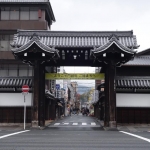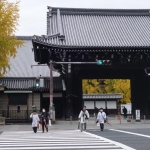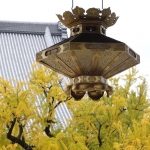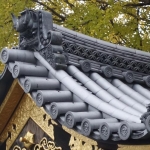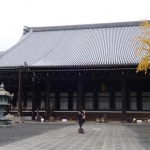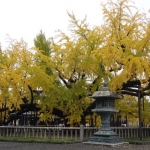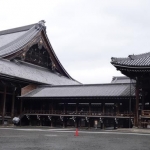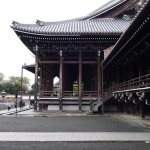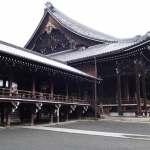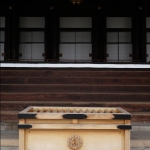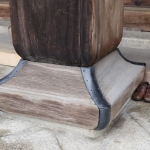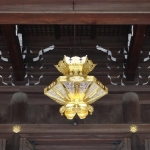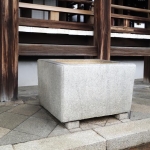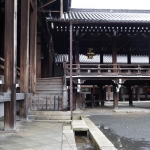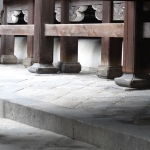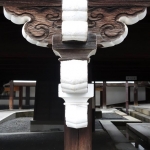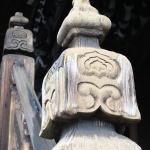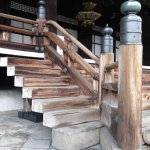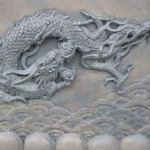Nishi Hongan-ji
About as good
as the morning-glories..
temple bell
–Issa
Nishi Hongan-ji is the head temple of the Jodo Shin-shu Hongan-ji-ha sect, and the large temple is one of 17 World Cultural Heritage sites of Kyoto.
Nishi Honganji was completely destroyed by fire only one time in 1617. The impressive gingko tree, especially in the fall, in the courtyard always survived. The tree has been accorded special care since the fire of 1864 when the rest of the area was in flames. The story goes that this tree” sprayed” the main building with moisture and “saved” it.
The karamon or karakado or Chinese gate is a National Treasure and was brought from Fushimi Castle. It is characterized by the usage of karahafu, an undulating bargeboards peculiar to Japan. Karamon are often used at the entrances of Japanese castles, Buddhist temples and Shinto shrines, and have historically been a symbol of authority.
Although kara can be translated as meaning “China” or “Tang,” this type of roof with undulating bargeboards first appeared during the late Heian period. It was named thus because the word kara could also mean “noble” or “elegant”, and was often added to names of objects considered grand or intricate regardless of origin. The karahafu developed during the Heian period and is shown in picture scrolls to decorate gates, corridors, and palanquins. The oldest existing karahafu is found at Horyu-ji temple.
Initially, the karahafu was used only in temples and aristocratic gateways, but starting from the beginning of the Azuchi-Momoyama period, it became an important architectural element in the construction of a daimyo’s mansions and castles. The karamon entrance was reserved for the shogun during his onari visits to the retainer, or for the reception of the emperor at shogunate establishments.
Karamon would later become a means to proclaim the prestige of a building and functioned as a symbol of both religious and secular architecture. In the Tokugawa shogunate, the karamon gates were a powerful symbol of authority reflected in architecture.
Long ago this gate was popularly known as the Higashi no Mon, or “Day-Spending Gate,” because by the time a visitor finished looking at the intricate carvings, the day was over.
Morning services are held daily from 6:00 am and are open to the public.


